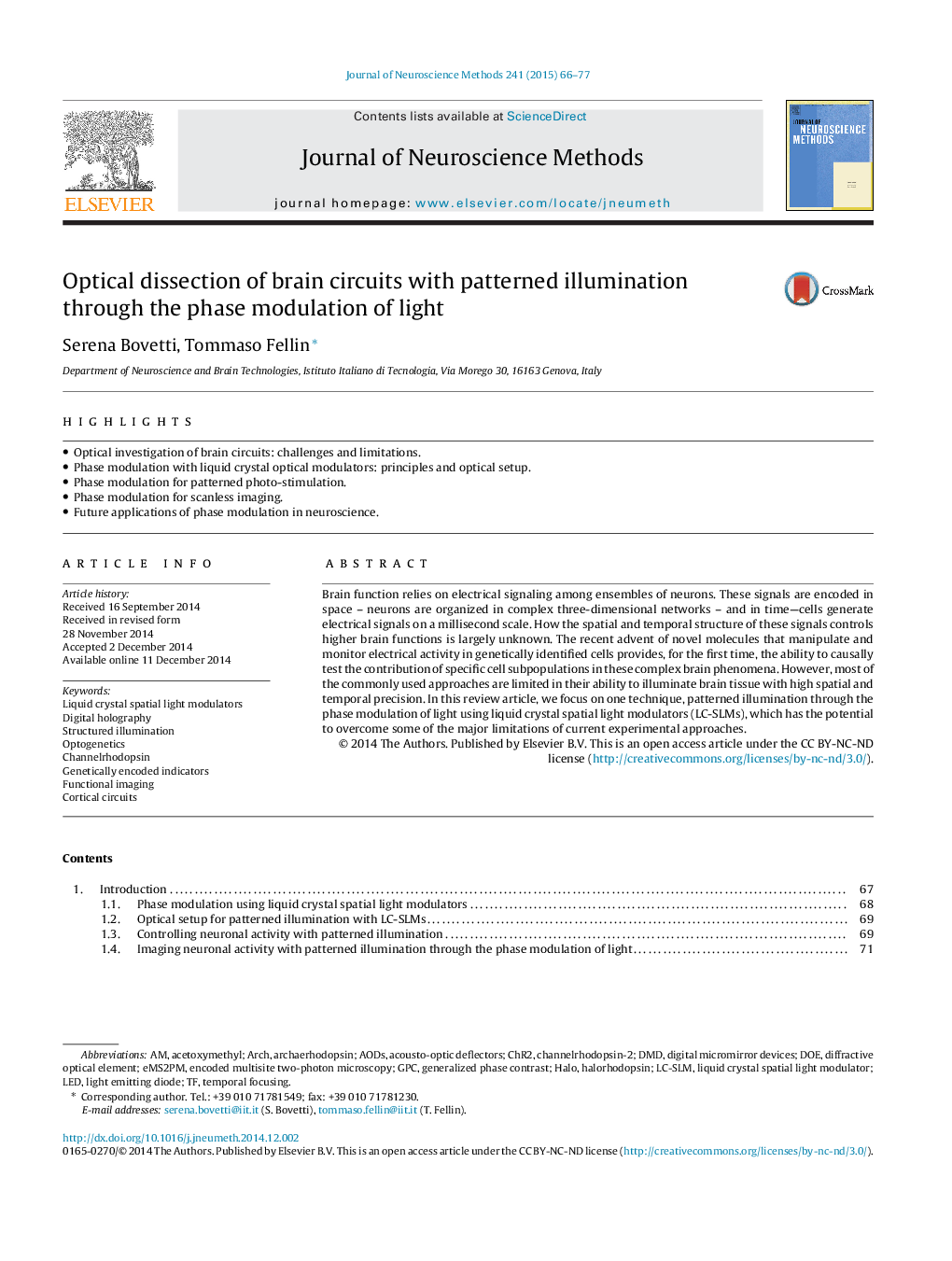| Article ID | Journal | Published Year | Pages | File Type |
|---|---|---|---|---|
| 6268335 | Journal of Neuroscience Methods | 2015 | 12 Pages |
â¢Optical investigation of brain circuits: challenges and limitations.â¢Phase modulation with liquid crystal optical modulators: principles and optical setup.â¢Phase modulation for patterned photo-stimulation.â¢Phase modulation for scanless imaging.â¢Future applications of phase modulation in neuroscience.
Brain function relies on electrical signaling among ensembles of neurons. These signals are encoded in space - neurons are organized in complex three-dimensional networks - and in time-cells generate electrical signals on a millisecond scale. How the spatial and temporal structure of these signals controls higher brain functions is largely unknown. The recent advent of novel molecules that manipulate and monitor electrical activity in genetically identified cells provides, for the first time, the ability to causally test the contribution of specific cell subpopulations in these complex brain phenomena. However, most of the commonly used approaches are limited in their ability to illuminate brain tissue with high spatial and temporal precision. In this review article, we focus on one technique, patterned illumination through the phase modulation of light using liquid crystal spatial light modulators (LC-SLMs), which has the potential to overcome some of the major limitations of current experimental approaches.
